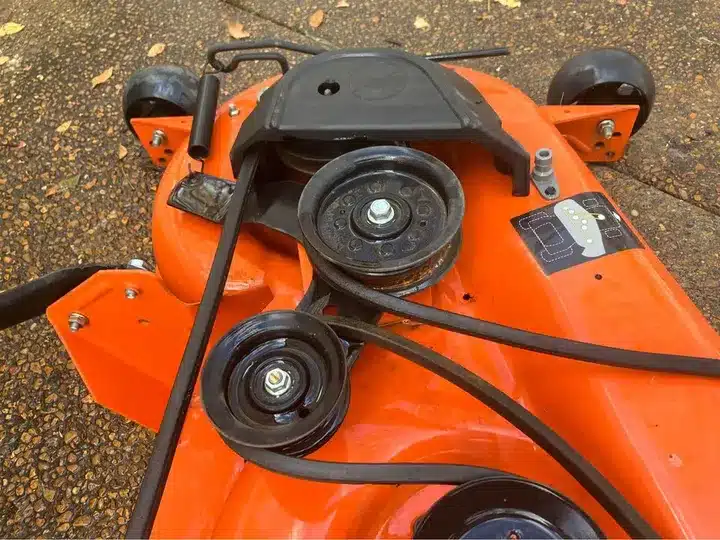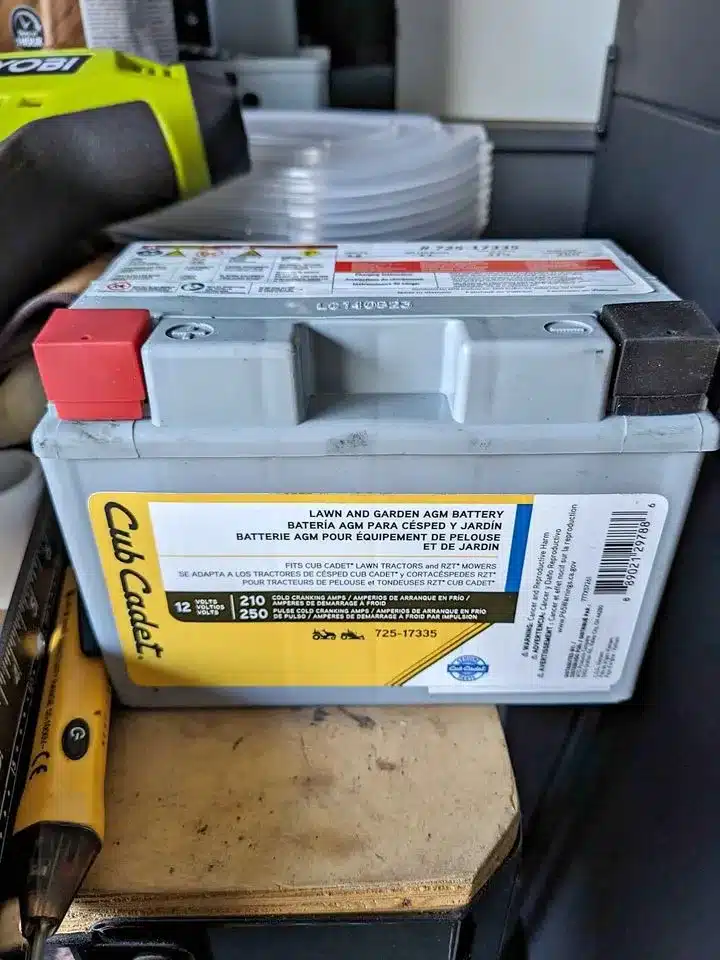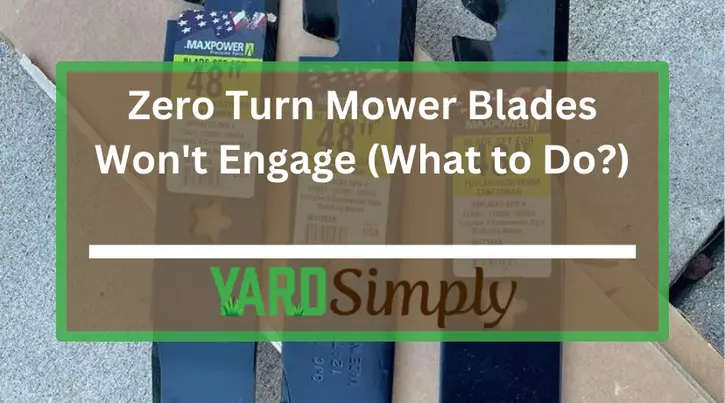As a seasoned landscaper with extensive experience in maintaining and repairing zero turn mowers, I understand the critical nature of blade engagement issues.
My expertise includes diagnosing and resolving problems ranging from worn deck belts and faulty PTO switches to electrical malfunctions.
This guide focuses on addressing the common causes behind the blades on a zero turn mower not engaging, ensuring you can return to efficient mowing with minimal downtime.
Trust in my hands-on knowledge as we tackle these challenges together.
Quick Summary
- To resolve zero-turn mower blades not engaging, inspect and potentially replace worn deck belts, check PTO switches, and ensure there are no blockages.
- Regular checks of the mower’s mechanical and electrical components, including the clutch, safety switch, and battery, are crucial for troubleshooting blade engagement issues.
- Approximately 30% of lawn mower problems stem from issues related to the cutting mechanism, such as blades failing to engage.
- In my experience, diligent maintenance is key to preventing disruptions like blade engagement failure in zero-turn mowers.
Zero Turn Mower Blades Won’t Engage
When it comes to troubleshooting issues with zero turn mower blades not engaging, several common problems are often at the root of the issue. Identifying these problems is the first step in getting your mower back to its optimal performance.
Here’s a concise list of typical problems you might encounter with zero turn mowers when the blades fail to engage:
- Worn Deck Belt
- Belt Slippage Off Pulleys
- Faulty PTO Switch (Electric Clutch)
- Bad Clutch
- Worn Clutch Cable (Manual Clutch)
- Weak Battery
- Bad Safety Switch
- Blown Fuse
Related Posts:
- How to Change Blades on Husqvarna Zero Turn Mower Easily
- Changing Blades on Bad Boy Mower Made Easy
- How to Change Riding Mower Blades: Guide and Useful Tips
Worn Deck Belt
In diagnosing why my zero turn mower blades won’t engage, I’ve found that a worn deck belt is often the culprit. This belt is crucial as it connects the engine’s power to the blade’s pulley system.
Over time, the belt can become frayed, cracked, or stretched, leading to a loss of tension. When the belt isn’t snug against the pulleys, it can slip or fail to transmit power effectively.
I’ve noticed that if the belt shows significant wear or damage, it simply won’t be able to engage the blades. Before inspecting the belt, I always make sure to disengage the clutch and turn off my zero turn mower to avoid any accidents.
Replacing a worn deck belt is typically a straightforward fix that can get the blades spinning again.
Related: Husqvarna Zero Turn Belt Problems Demystified
Belt Came Off the Pulleys

This issue might be due to a worn idler tensioner arm spring or a failing pulley bearing.
Let’s explore how these components can lead to belt problems and what we can do to fix them.
Worn Idler Tensioner Arm Spring
This critical spring maintains proper tension on the drive belt, but when it’s worn, the belt can’t grip the idler pulleys effectively. Consequently, my zero turn mower blades won’t engage.
It’s a clear sign I need to replace that worn idler tensioner arm spring.
Worn Pulley Bearing
Identifying the worn pulley bearing early can save a lot of hassle.
Once replaced, it ensures the belt remains on track, restoring full function to the mower’s blades.
Faulty PTO Switch (Electric Clutch)
This component is crucial for the power takeoff system to function on my riding lawn mower. It’s responsible for transferring power to the blades; without it, they remain still, no matter what I do.
I’ve learned that troubleshooting this part is key. I’ll check for any obvious damage or loose connections first. If the PTO switch isn’t delivering the necessary signal, it’s likely faulty and needs replacement.
It’s not always straightforward, but figuring this out is essential to get my mower back in action.
Bad Clutch
Without a functioning clutch, the PTO can’t do its job, and my riding lawnmower remains useless for cutting grass.
I’m aware that a clutch can fail due to wear and tear, electrical faults, or even a seized bearing. I’ll need to inspect the clutch coil for continuity and look for any obvious damage.
If it’s indeed beyond repair, I’ve got no choice but to replace the clutch to get back to mowing efficiently.
Worn Clutch Cable (Manual Clutch)
Moving beyond electrical issues, I’m now examining the mower’s manual clutch cable, which may be worn out and responsible for the blades not engaging.
It’s important to know that a manual clutch system on mowers relies on a cable to engage the PTOs (power take-offs), which in turn activate the belts and blades.
Over time, this clutch cable can stretch or fray, leading to a lack of tension that’s crucial for blade engagement.
I’ve seen this happen before; a worn clutch cable means the lever doesn’t transfer enough force to move the PTO.
Inspect the cable closely for any signs of wear or damage. If it’s compromised, it’s a clear culprit, and will have to be replaced to get those blades moving again.
Weak Battery

When I suspect the battery’s at fault, I hook it up to a battery charger to ensure it gets a full charge. This is essential because the mower requires a certain voltage and amperage to operate effectively.
A weak battery might not provide the necessary electrical shock to trigger the blade mechanism. I always check the battery’s voltage with a multimeter. If it’s below the recommended level, it’s clear that the battery’s the culprit.
It’s a straightforward fix: either recharge the battery or, if it’s beyond salvation, replace it.
Bad Safety Switch
When I suspect a bad safety switch, I grab my multimeter and screwdriver and get to work.
I locate the switch using the lawn mower’s schematics – it’s usually under the seat or near the control levers. With the screwdriver, I carefully bypass the switch to test if that’s the issue.
If my multimeter reads an open circuit when the switch should be closed, I know it’s time to replace it.
It’s a safety feature, so I make sure to handle it with care. Keeping the schematics handy ensures I reconnect everything correctly after the fix.
Blown Fuse
It’s an issue that can stump even regular users of lawnmowers. The fuse is a safety feature, designed to blow if there’s an electrical fault, preventing further damage or a potential fire. So, checking the fuse first is logical when the blades don’t kick on.
To identify the root cause, I’ll locate the fuse box and inspect the fuse connected to the blade system. If it’s blown, the glass will often appear cloudy or the metal filament inside will be broken.
Replacing the fuse is usually simple. It’s a matter of popping out the old one and snapping in a new one, making sure it’s the correct amperage. Then, I’ll try the switch again; with a bit of luck, the blades will roar to life.
Our Verdict
Tackling the issue of preferred zero turn mower blades not engaging has been quite a journey. I’ve learned a ton from scrutinizing the deck belt to delving into the mysteries of the PTO switch and clutch system.
It’s like being a detective, but for lawn mowers! I found out that regular checks and maintenance are absolute lifesavers.
Sure, it might seem daunting at first, especially when it comes to the nitty-gritty of mechanical and electrical components. But, you know, getting your hands dirty and solving these puzzles can be oddly satisfying.
Just remember, if it all seems too complex, there’s no shame in calling a pro. Keeping your mower in top shape means you’re always ready for a smooth, uninterrupted mowing session. Happy mowing!
Frequently Asked Questions
Can a faulty ignition switch be the reason my zero turn mower blades won’t engage?
Yes, a faulty ignition switch could be why I’m having trouble; it might not send the signal to engage the blades. I’d check the switch’s connections or replace it to see if that helps.
How do I safely test the electric clutch to see if it’s the cause of my mower blades not engaging?
I’ll first disconnect the spark plug to ensure safety. Then I’ll check the clutch’s wiring and use a multimeter to test for continuity. If there’s no continuity, the electric clutch might be the problem.
Can a zero turn mower blade engagement issue be due to a problem with the mower’s software or control module?
I suspect a software glitch or a faulty control module could indeed cause blade engagement issues. It’s worth checking the system’s diagnostics or consulting the manufacturer for any software-related troubleshooting.
Is there a way to manually override the blade engagement mechanism if an electrical or mechanical failure occurs?
I’m not sure if there’s a manual override for the blade engagement. If there’s a failure, I’d check the manual or consult a professional to avoid accidentally damaging the mower or injuring myself.
How often should i perform maintenance on the mower’s blade engagement system to prevent future issues?
I should perform regular maintenance on my mower’s blade engagement system every 25 hours of use or at least once a season to prevent issues and ensure optimal performance.


